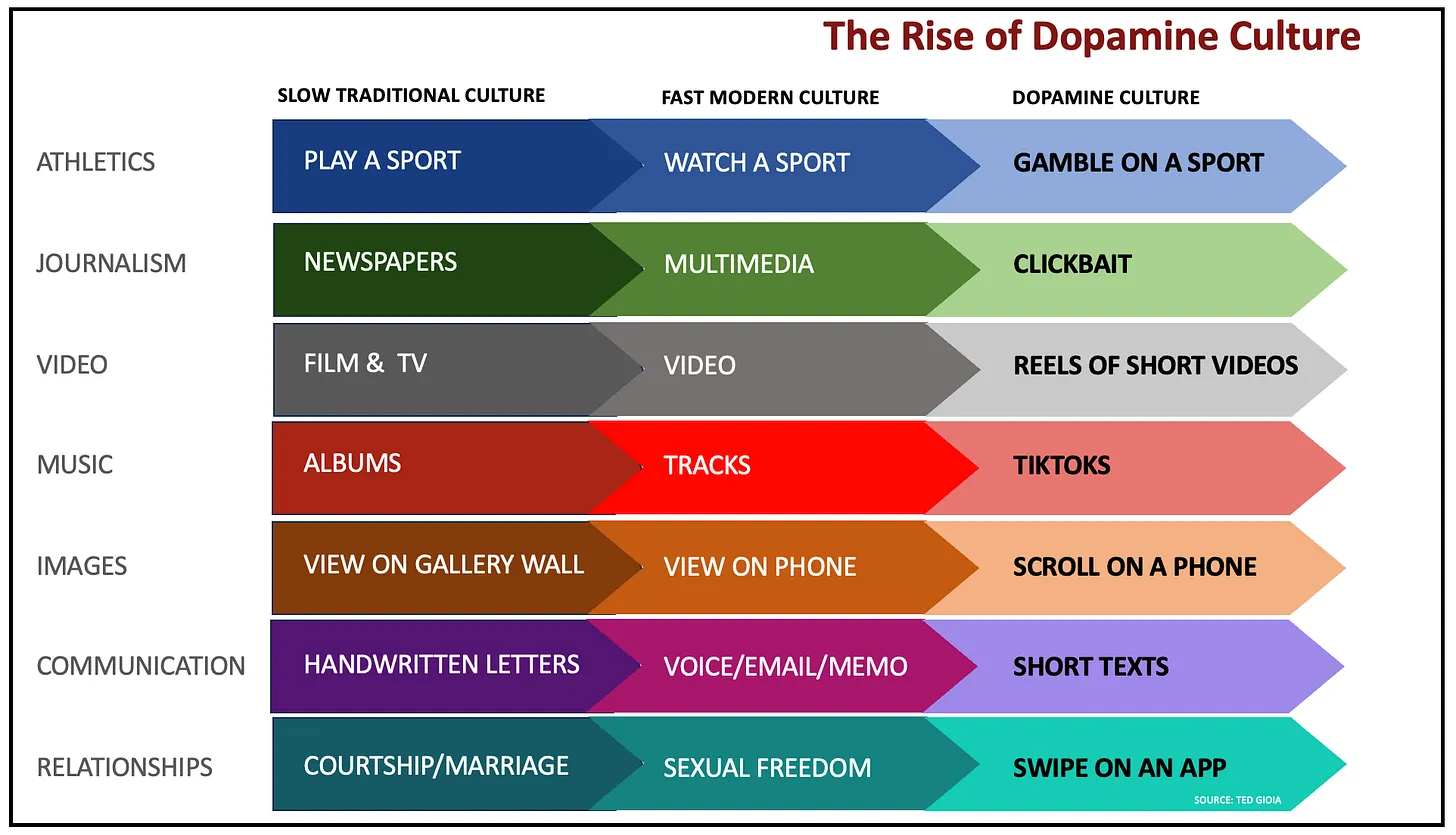The State of the Culture, 2024<br /> by [[Ted Gioia]]<br /> accessed on 2025-08-18T08:53:09

The State of the Culture, 2024<br /> by [[Ted Gioia]]<br /> accessed on 2025-08-18T08:53:09

Gloria Mark, a professor of information science at the University of California, Irvine, and the author of “Attention Span,” started researching the way people used computers in 2004. The average time people spent on a single screen was 2.5 minutes. “I was astounded,” she told me. “That was so much worse than I’d thought it would be.” But that was just the beginning. By 2012, Mark and her colleagues found the average time on a single task was 75 seconds. Now it’s down to about 47.
. Additionally, designers should use attractive colors for children of lower age groups.
the importance of colours
What are the unique UX needs of children?Four critical areas must be considered when designing products and services for children. Cognitive abilities Motor skills Attention span Emotional responses
Oh awesome can I CITE this? It an online Blog okay because this is great.
(14:20-19:00) Dopamine Prediction Error is explained by Andrew Huberman in the following way: When we anticipate something exciting dopamine levels rise and rise, but when we fail it drops below baseline, decreasing motivation and drive immensely, sometimes even causing us to get sad. However, when we succeed, dopamine rises even higher, increasing our drive and motivation significantly... This is the idea that successes build upon each other, and why celebrating the "marginal gains" is a very powerful tool to build momentum and actually make progress. Surprise increases this effect even more: big dopamine hit, when you don't anticipate it.
Social Media algorithms make heavy use of this principle, therefore enslaving its user, in particular infinite scrolling platforms such as TikTok... Your dopamine levels rise as you're looking for that one thing you like, but it drops because you don't always have that one golden nugget. Then it rises once in a while when you find it. This contrast creates an illusion of enjoyment and traps the user in an infinite search of great content, especially when it's shortform. It makes you waste time so effectively. This is related to getting the success mindset of preferring delayed gratification over instant gratification.
It would be useful to reflect and introspect on your dopaminic baseline, and see what actually increases and decreases your dopamine, in addition to whether or not these things help to achieve your ambitions. As a high dopaminic baseline (which means your dopamine circuit is getting used to high hits from things as playing games, watching shortform content, watching porn) decreases your ability to focus for long amounts of time (attention span), and by extent your ability to learn and eventually reach success. Studying and learning can actually be fun, if your dopamine levels are managed properly, meaning you don't often engage in very high-dopamine emitting activities. You want your brain to be used to the low amounts of dopamine that studying gives. A framework to help with this reflection would be Kolb's.
A short-term dopamine reset is to not use the tool or device for about half an hour to an hour (or do NSDR). However, this is not a long-term solution.
Animating text
Animating your text gives you more control over your audience's attention. You can easily move around graphics, but if the moving object is text you want your audience to read, they will follow along to gather the information within the text. It is important not too move your text around too much as this can also be a double edged sword.
Much of their success can be attributed to their ability to keep viewers’ attention
Very important, most viewers on social platforms are Goldfish Brains. They will eventually click/engage with something that captures their attention based on the graphics and keywords used in the caption or thumbnail.
I like to reinforce words being said with motion graphics, especially when someone is listing things in interviews
This has a higher rate of capturing your audience's attention, especially during presentations (which most videos are). If your audience is not paying attention to what you're saying, they can always view it.
Some studies say the human attention span is less than that of a goldfish!
This is a fact and I suffer from Goldfish Brain. As someone who creates content online, it is very important to factor in that my work will be views once and that's that. If I am lucky it will be viewed for more than 7 seconds.
Contrary to popular belief, students don’t have short attention spans. They can focus for hours on a single project. But it has to feel relevant and meaningful to them, and they need to have the time and the space to accomplish it. It’s not easy in a world of school bells and curriculum maps. However, it’s something we should strive for. We should draw students into the deeper, slower work of creativity — because when that happens, learning feels like magic. - “Myth and Mystery of Shrinking Attention Span” - Dr K. R. Subramanian
This should be motivation enough for instructors to take the time - assuming their bureaucratic overloads allow it - to find ways to make education relevant. This is something, however, that must be baked into people at a young age. And that's the real problem.